It’s been clear for some time now that F1 is going to change in a big way for 2021. On the technical side, this will include the much-anticipated overtaking aero changes and for the lesser-funded midfield teams a swathe of spec parts to cut costs and equalize the grid. No regulations have been published, but there is a growing amount of information being released that gives us our first clues into what F1 may look like in 2021.
Changes
Since Liberty took over the running of F1, there’s been more focus on the sport’s roadmap going forwards, something forever lacking in the past. Also, the aims of the sports and how to enact them has been a key direction for Liberty. While F1, via the FIA and Liberty has a lot of changes to come, some of the technical changes are quite specific and being tackled intelligently with the help of Ross Brawn. Some of the aims of creating better racing is often considered simply increasing overtaking but also cost control and performance equalization to get the mid-grid teams closer to the top three.
We can now look at how these three aspects will change the sport, with the potential aero and spec part rules for 2021.
Aero
When it comes to the aero plans for 2021, things have already started moving with the 2019 rules. Historically, the effect of F1’s rules have not been researched beforehand, and what seem like good ideas get written into the rulebook without enough thorough analysis as to their effect or the potential loopholes within them. Often the rules fail to achieve what they set out to do, and what’s more they often come at a cost to other factors. Many attempts to slow the cars down have conflicted with overtaking. As wings have become ever smaller and highly loaded, the cars have become too sensitive to running in another car’s wake.
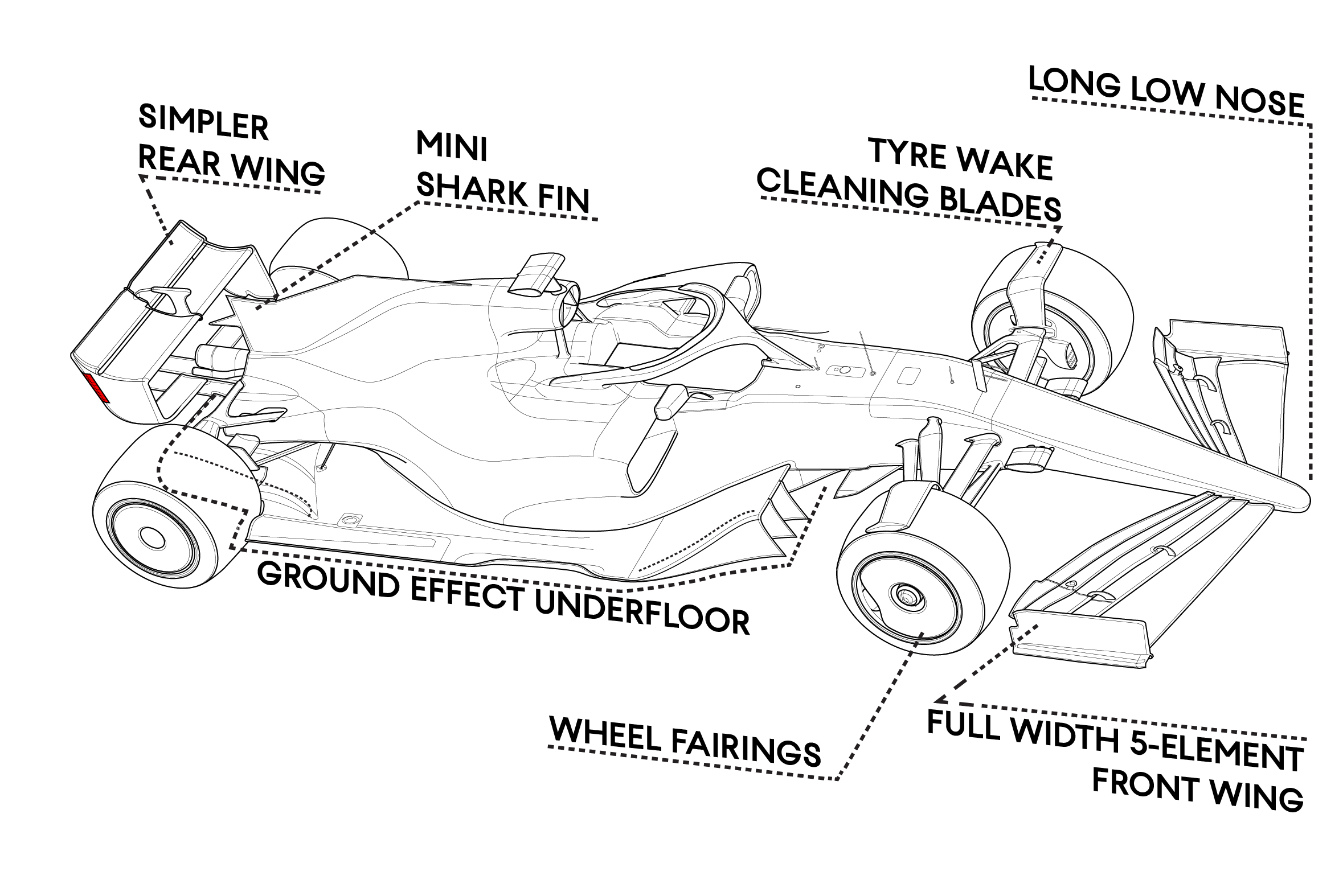
One exception was the 2009 rules, that enjoyed a brief aero research programme, run and paid for by the teams under the guise of the Overtaking Work Group (OWG). Only now, under Liberty, and consulting with Ross Brawn, has a major rewrite of the rules been thoroughly researched beforehand, such that the changes are validated before being written into the rules. To achieve this, Brawn has set up an R&D group of ex-F1 engineers to look at every aspect of the aero rules, throwing away a lot of the legacy rules in order to come up with a rule set that meets the ‘overtaking’ brief given to them by Liberty.
While the rules are not yet confirmed, there are two concepts under investigation. The most publicized one being the ‘India’ car model, exposed in the motorsport technical press (Racecar Engineering Magazine) as a CFD model, that gives us clues as to exactly how the cars might look and the mechanisms by which they will improve overtaking.
It’s no surprise that the aim is to reduce the importance of the wings, by giving more of the job of downforce creation to the underfloor, whilst at the same time cleaning up the extraneous bodywork, reducing this to a few devices aimed at cleaning up the car’s wake.
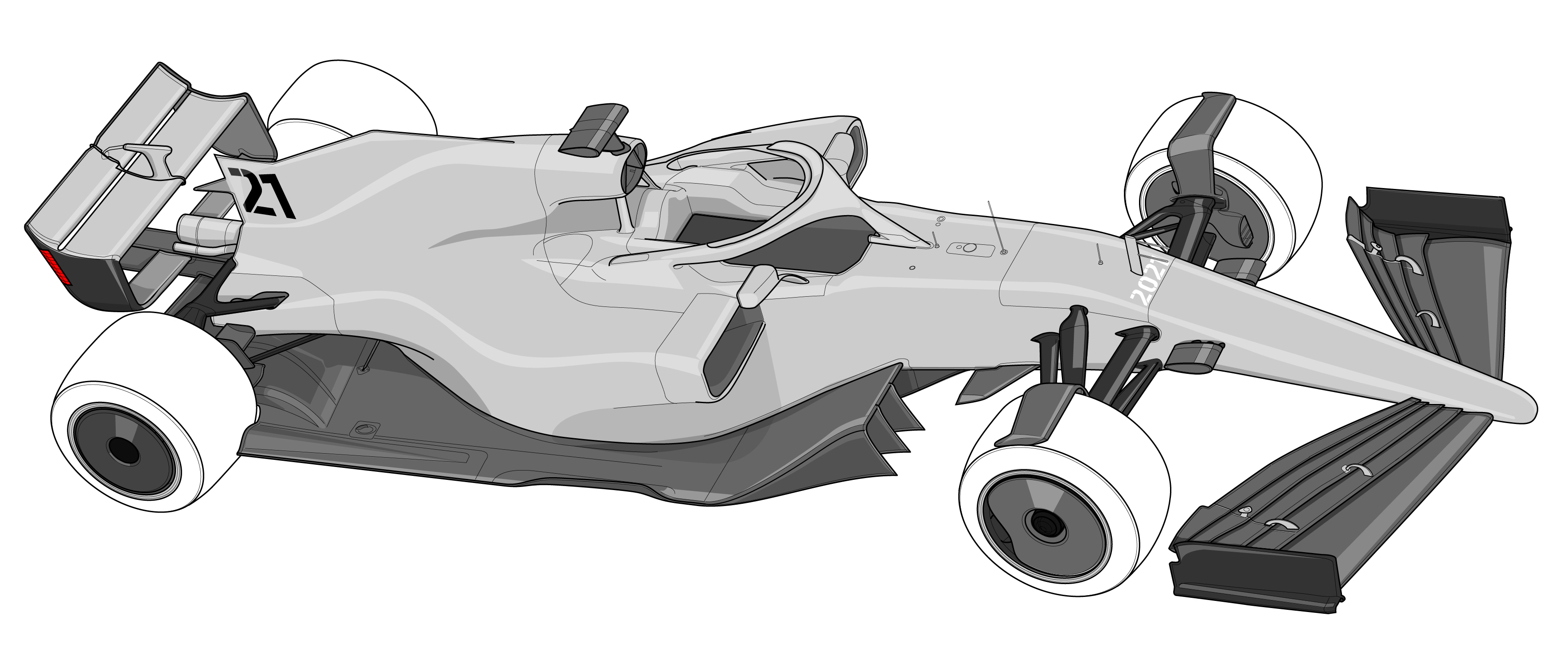
Looking at the car illustrated here, this is a 2019 spec car converted to the key changes promoted by the India concept.
Looking first at the floor, the simpler flat floor and diffuser of the current car gives way to the fuller underbody tunnels, similar to IndyCars and reminiscent of the F1 ‘wing’ cars last raced in 1982. The tunnels feed more air under the floor, speeding it up and reducing its pressure in order to create downforce. With a ramped inlet and larger rear diffuser tunnels, far more air will flow under this floor, creating lots of downforce with very little associated drag. Underfloor downforce is created not under the diffuser section but in two spots, first where the floor first narrows, then again when it starts to expand. It’s noticeable that this floor is much longer than the current floor, so the downforce will be created more equally front to rear, thus reducing the importance of the wings. While any race car aero device will be handicapped when running behind another car, the underfloor is believed to be less sensitive than steep wings or short diffusers. So, the floor concept should meet the overtaking brief.
The car is shorn of most aero add-ons, the bargeboards being a specific area, but the fences within the floor’s inlet will also act as bargeboards, directing the floor under and out of the floor’s tunnels. A delta-shaped fin mounted in-line with the inlet will also redirect the upwash from the front wing towards the tunnels.
At the front, the wing profiles now span the full width of the car, intersecting the nose in the middle, unlike the current wings that hang below the nose and have a mandatory neutral center section. This is a key change and cures some of the problems of the 2009 Overtaking Working Group in not being able to follow up on their initial research. The post-2009 front wings created problems for following cars, as they were so wide and had the change in section from wing to the neutral center span. The wide wings allowed teams to create outwash at the endplate, to push air out around the front tyres, rather passing inside them as was the pre-2009 solution. The wing’s joint with the neutral section also formed a powerful airflow, since called the Y250 vortex, which also pushes airflow outwards behind the front tyre. The benefits of both these effects in controlling the front tyre wake led development for nearly ten years, before the current 2019 rules started to clean up the endplate outwash. Now, the 2021 rules seek to clean up the Y250 airflow by ridding the wing of its center section and thus prevent teams churning up the airflow in the Y250 area.
Instead, the front tyre wake is managed by two devices. Firstly, the blade over the top of the tyre’s tread and secondly the return of the wheel fairing. The blade helps clean up airflow passing over the tyre, reducing the separation and turbulence created by the low-pressure area behind a spinning tyre. Then, the wheel fairing helps with cleaner airflow passing around the sides of the tyre. These ‘frisbees’ were banned for 2010, as they were such an effective aero tool, so their return may be as fixed fairings as we saw in 2009, (i.e. not spinning with the tyre) or as fairings fixed to and spinning with the wheel. Both have benefits and drawbacks with the practicalities of wheel changing and brake cooling.
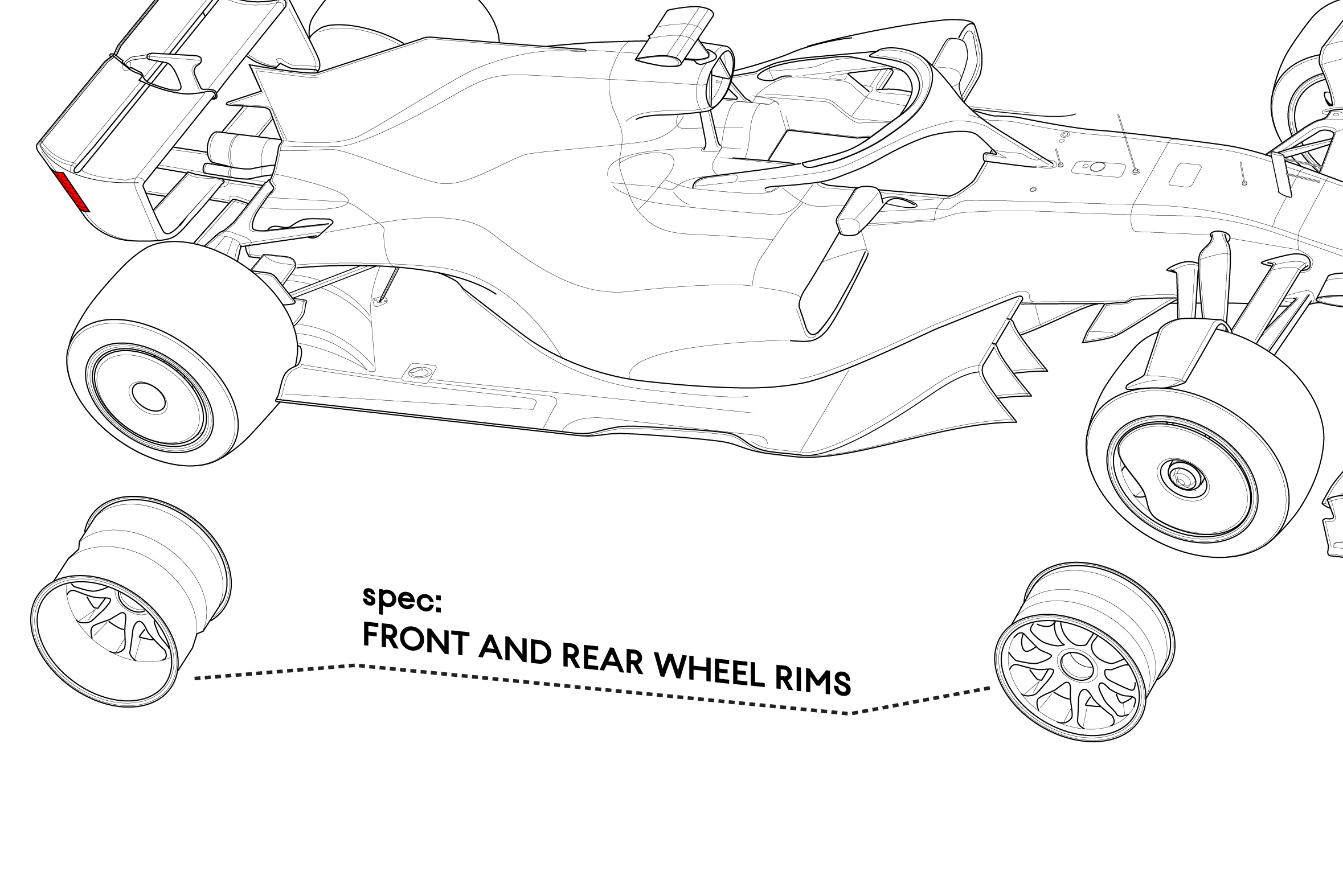
It’s also worth noting that the 2021 tyres may be the larger diameter wheels that Pirelli have been asked to introduce for some time. Thus, the car model shown here has 18” rims, with the brake duct bodywork filling the inside of the rim. The exact rules for the brake dimensions and the bodywork rules are still unclear at this stage.
At the rear, the large diffuser exit is sealed with vanes mounted at each side that sit lower than the floor. This should keep the underfloor aerodynamically efficient, but without the sudden loss in downforce sometimes experienced from the skirts lifting off the ground as with the early eighties wing cars.
Without the requirement to produce lots of downforce from the top rear wing elements, the India concept wing is much taller and narrower than current wings while it sees the return of the lower beam wing elements spanning from the rear crash structure across to the wing endplates. This will keep the diffuser tunnels and top rear wing working together, which should make the rear downforce more consistent.
Also at the rear, the shark fin sees a return although this is expected to come back ahead of 2021 in 2020 in a baby shark fin format. Its key function is to provide space for the driver’s race number, but will also serve to keep the rear wing working through corners, which again is better for consistent handling.
The net result of the changes are downforce-producing surfaces that work well in turbulence and won’t unbalance the car if they fail to do so. Then, the proliferation of aero devices to push tyre front wake out wide behind the car have been deleted. Instead, the car’s rear aero surfaces will sit in the front tyre wake, but not suffer for doing so. In all, this is a well-conceived concept and one that has been proven in the wind tunnel, so should meet the requirements of the better racing for 2021 and beyond.
Spec parts
Rarely discussed and on show, there’s a lot of an F1 car that is identical across the grid. Every car runs the same tyres, for example, but also the same ECU controlling the car’s chassis and engine. Then, there’s a myriad of smaller systems where the FIA specify either the exact part, supplier or specification. Equally, there’s non-FIA specified parts that teams choose to run – nearly all cars use Brembo brakes, for example.
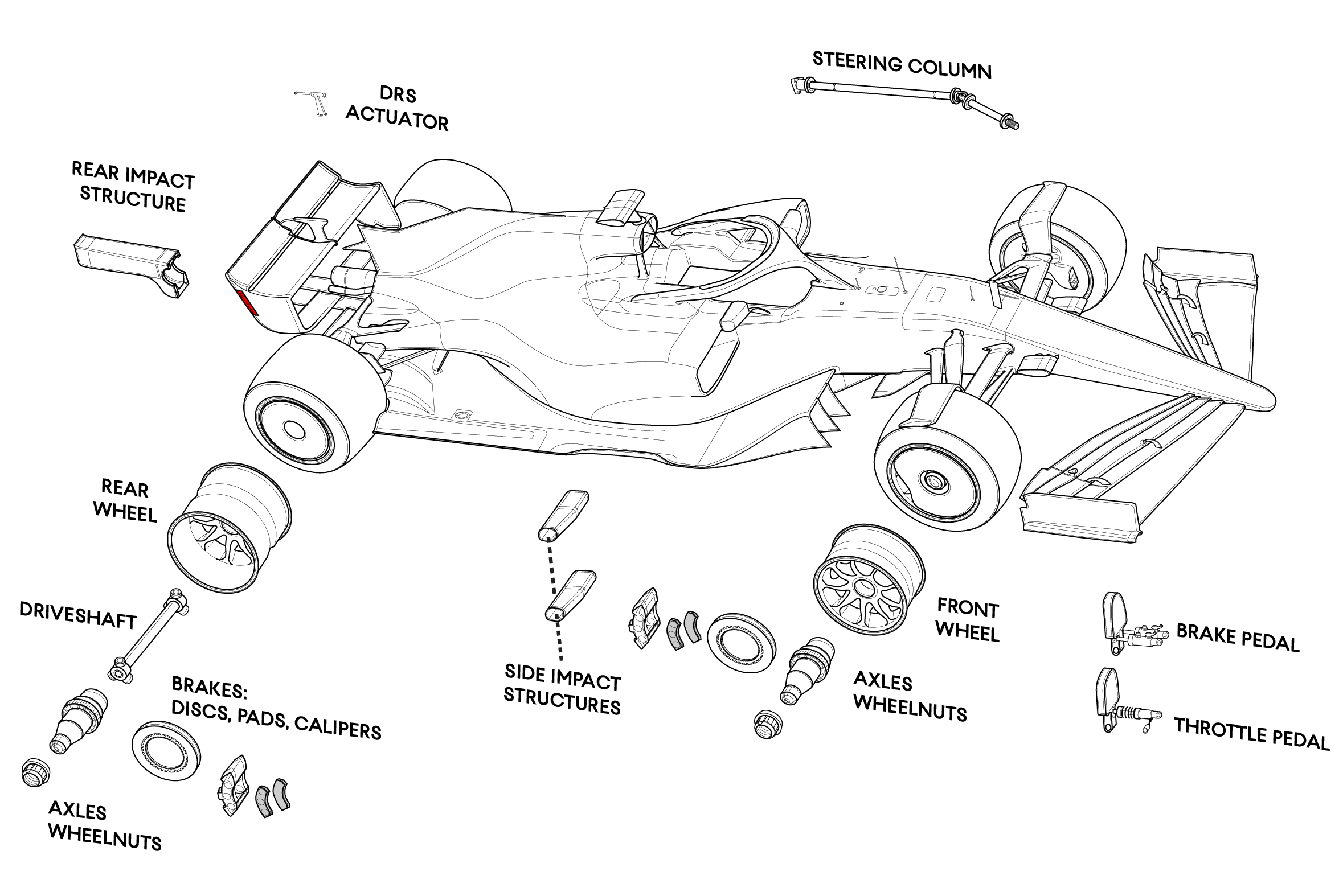
To an even lesser talked about extent, there’s a huge amount of design on the cars that is near identical in concept, albeit slightly different in execution but adds nearly no performance advantage to the cars. Much of the gearbox, suspension, structures, hydraulics or electronics are virtually identical between the teams and some teams already buy these parts in from their partner teams.
So, it’s false to say that spec parts are not F1 and that every part much be unique and at the peak of innovation. It would, of course, be nice to have a motorsport category like that, but there isn’t the money to invest into that level of differentiation. In more austere times, the teams should be focussing on what makes the car go faster, not engineering large parts of the car from scratch for little impact on lap times. To accept more spec parts in F1 will reduce costs for the smaller teams and bring them closer to the top teams. Of course, the better-funded teams will divert their resources into the areas of development that remain free, so F1 will still remain something of a meritocracy.
Parts listed as potential spec parts for 2021 have emerged in the German press (Auto Motor und Sport). There’s an interesting mix of the obvious, the questionable and the unnecessary on the list.
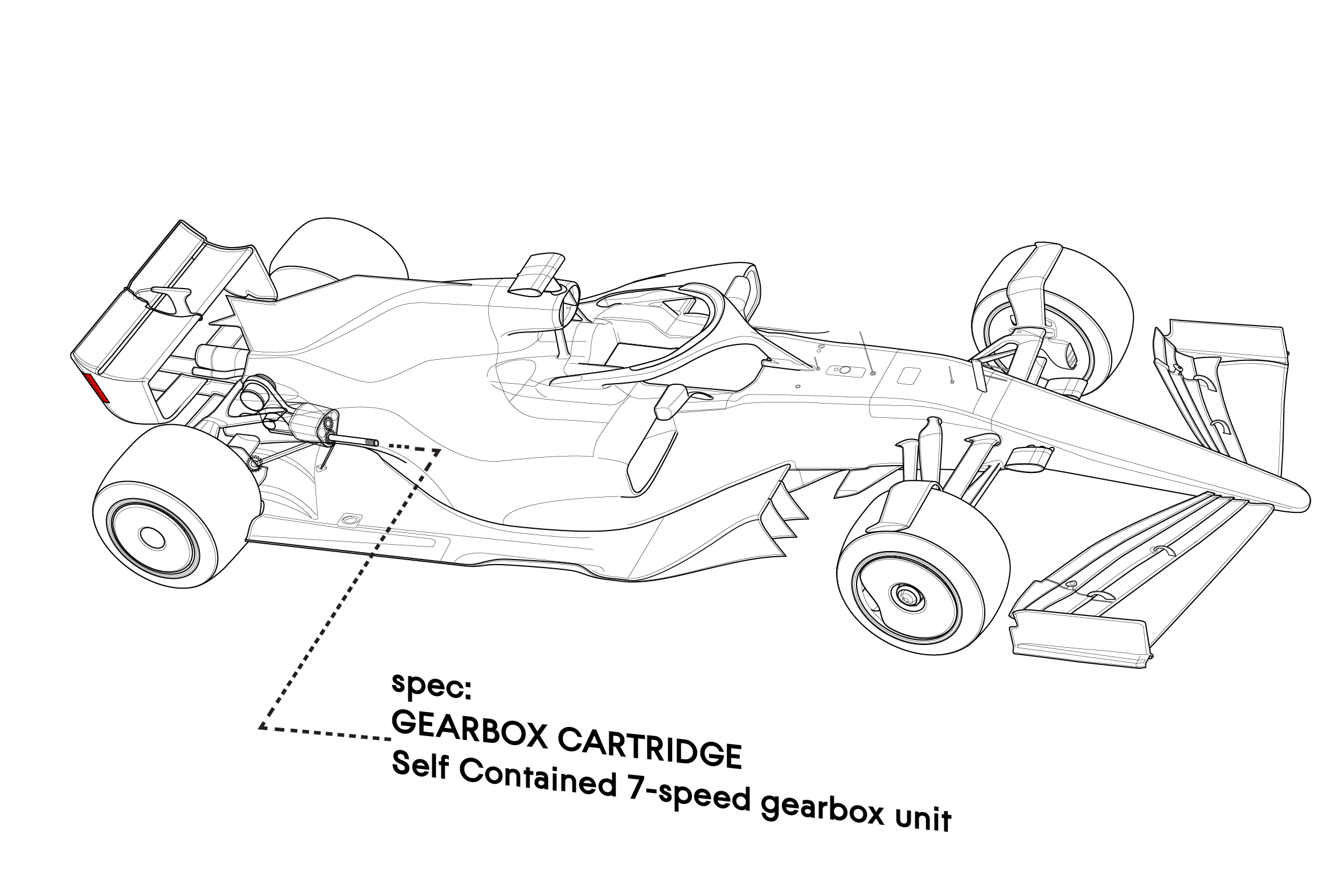
Already we know that the ‘gearbox’ will be spec part for 2021 and invitations for this tender have already been requested by the FIA. The new spec part will be a gearbox cartridge, this is the most common gearbox layout in F1, where the gears, selection mechanism, differential, and oil are all mounted in a self-contained unit. This cartridge unit then sits in the carbon rear casing of the car, which also joins the engine\chassis to the rear suspension and crash structure.
Within the cartridge, the FIA have requested just a seven-speed (plus reverse) gearbox, rather than the eight-speed gearbox raced since 2014. The torque output of the current power units and the team’s experience of fixed gear ratios for the whole season means that the eighth gear is superfluous. Gear selection must be seamless for upshifts at least, so the new cartridge unit will need to two separate gear selection mechanisms. Whilst once cutting edge, this seamless shift technology is a simpler commodity nowadays, the Xtrac spec gearbox bought by the new teams back in 2010 was seamless even back then.
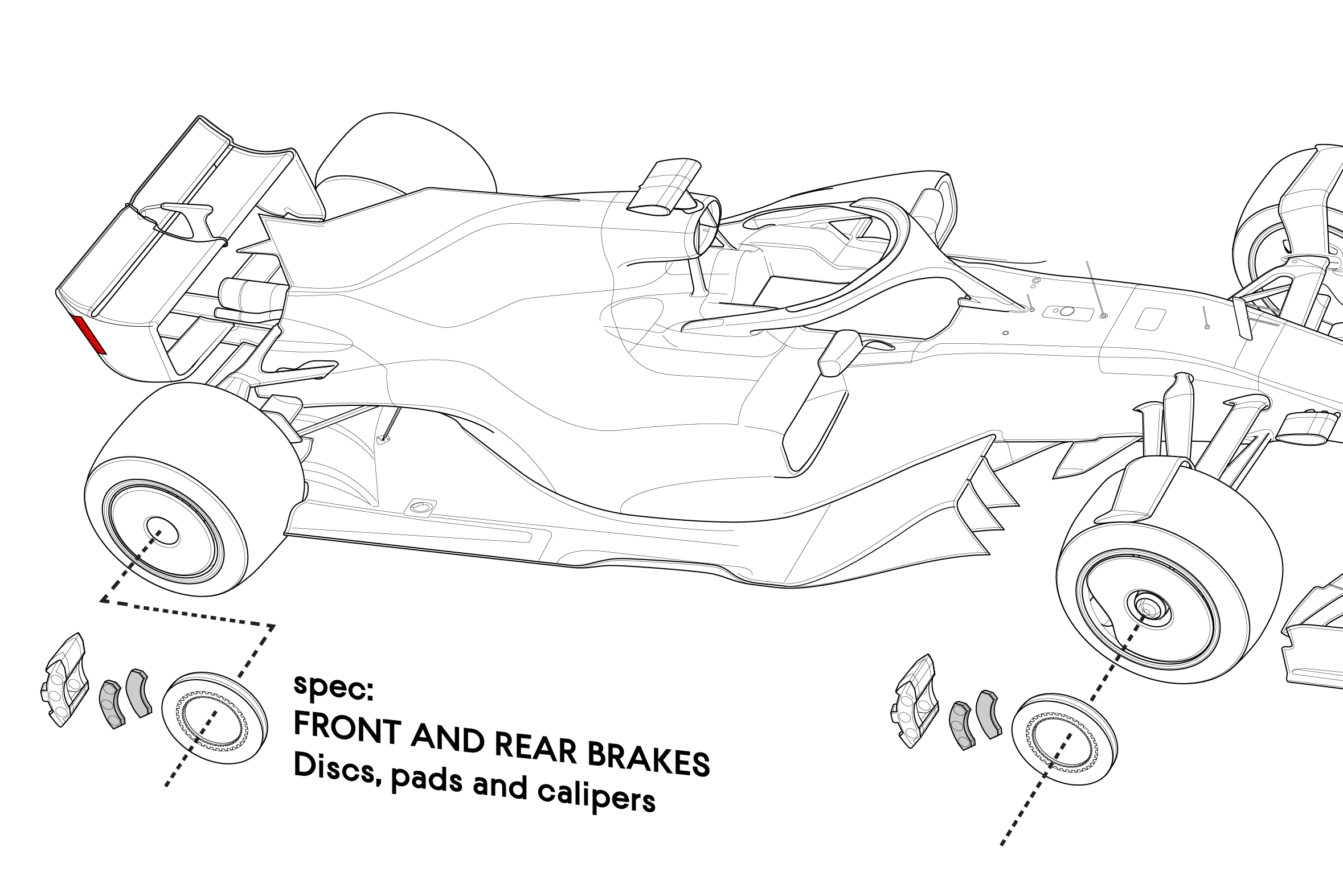
Brakes are the obvious choice for being a spec part. Currently, in F1 there are three brake caliper suppliers and two carbon brake material suppliers; Brembo being the dominant ‘brake system’ supplier, with AP racing and Akebono being an option as Caliper supplier and Carbone Industrie being the other brake material supplier. Even though the brakes for most of the teams come from the same supplier with its own technology, each team will bespoke the finer details of the brakes to suit their purposes, which requires design resources and added costs, for little apparent benefit.
At this time, it’s not known if the brake dimensions or specification will change to suit the potentially larger wheels, as required for the Pirelli tyres in 2021.
There are some drivers that prefer the ‘feel’ of different brake material, while consistency of quality and supply will be a key factor. But the spec supply of brake calipers, discs, pads and master cylinders shouldn’t harm the sport.
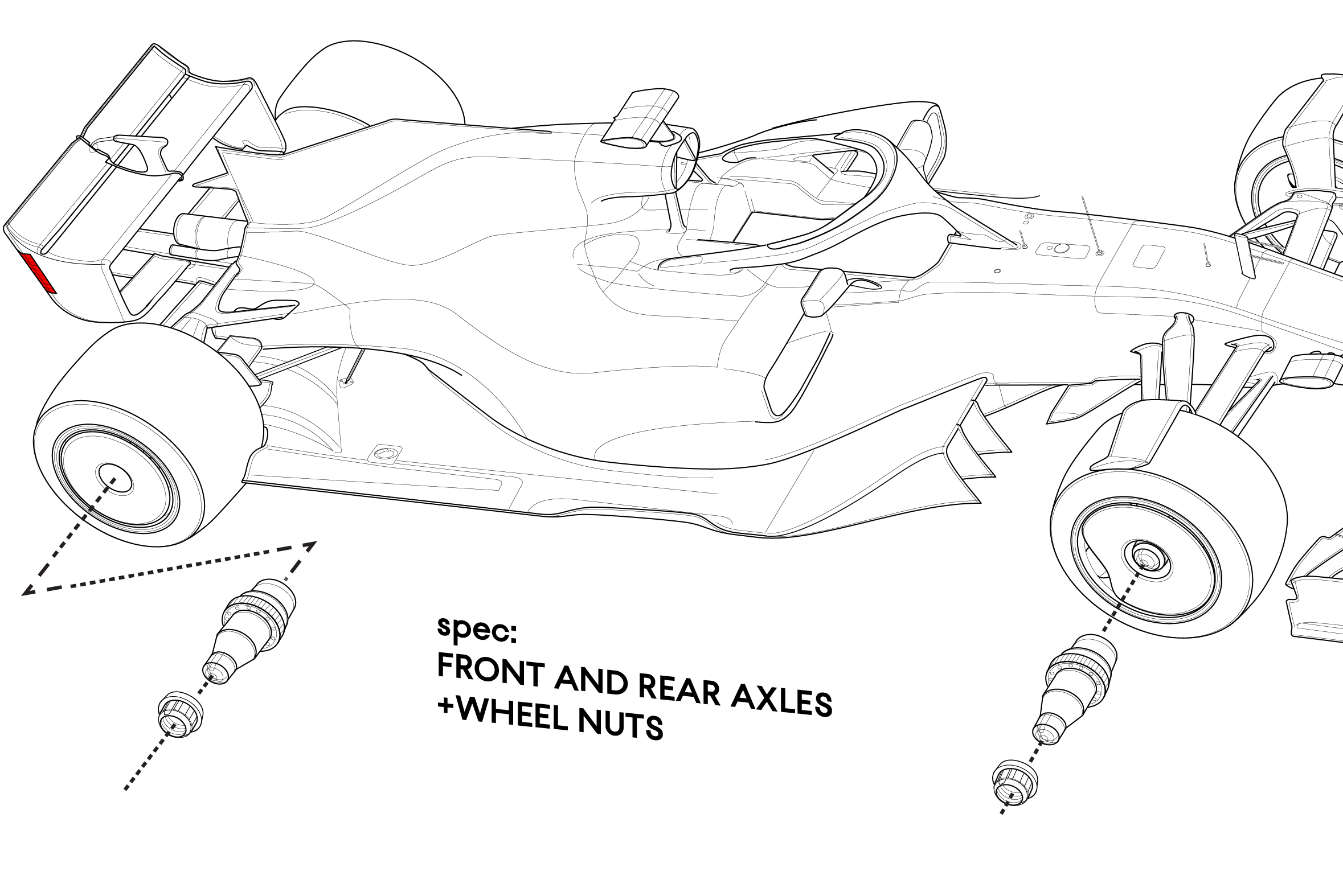
Related to the brakes, another spec part put forward are the axles and wheel nuts. The FIA has been clever to limit this to the rotating assembly, rather than the upright that the axle sits within, as this latter part has huge influence of the suspension geometry and thus on the car’s handling, clearly an area teams will still want to have freedom over.
The axle with its wheelnut, plus presumably its bearings and the ‘bell’ that connects the axle to the brake disc, can easily be spec parts. Perhaps these parts may be made by the proposed brake supplier, as the interface between brake disc and axle is a safety critical factor.
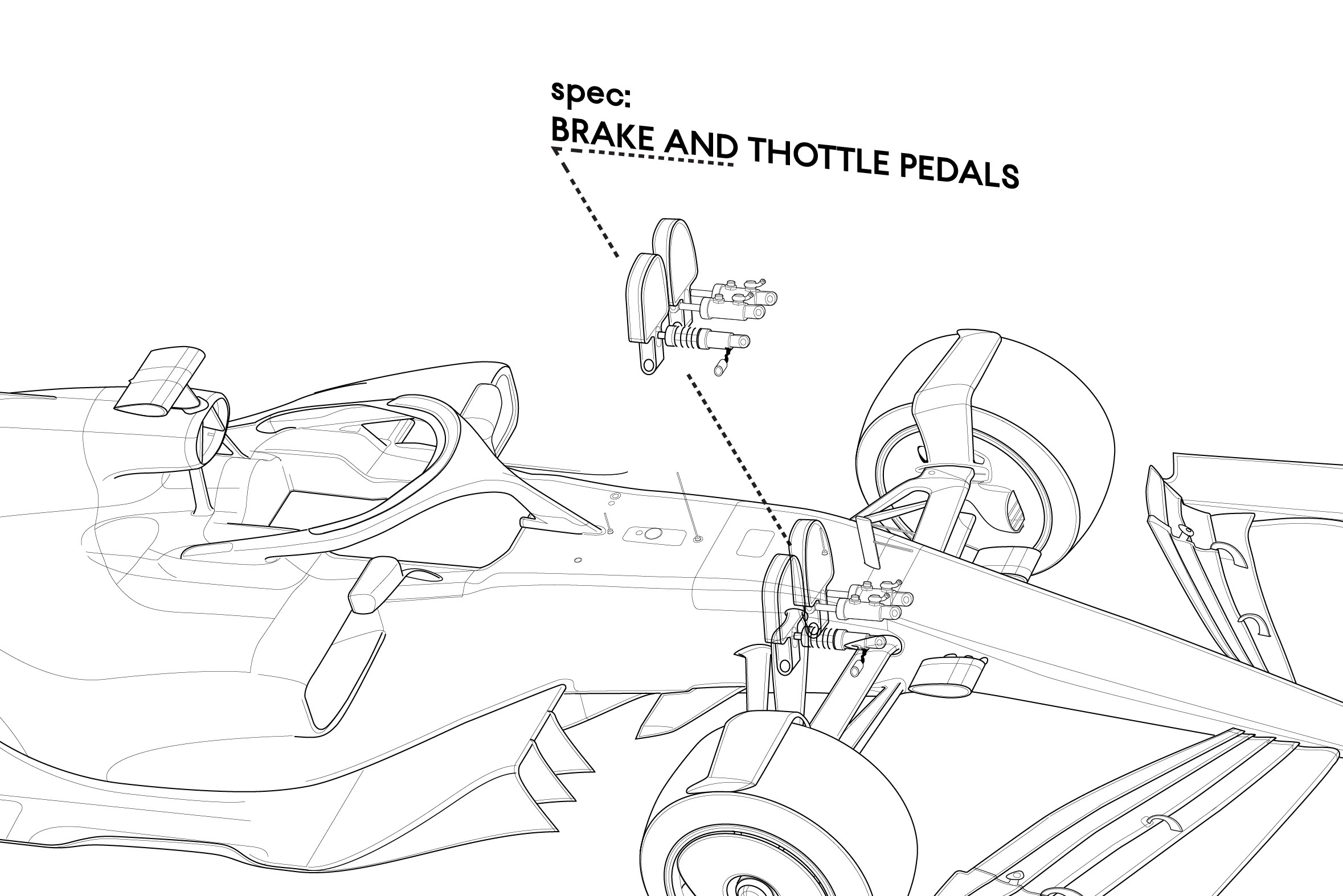
Likewise, the pedals are a potential spec component, although this might be a more contentious part for the teams to accept. Every driver will have a preference for pedal shape and feel, especially with the braking set up, the motion ratio of the pedal to master cylinder hugely affect the driver’s confidence in the brakes. Any spec part would need to have some adjustability for the driver get the ideal set up. Similarly, the shape of the pedal face must be free for the teams to adapt for the driver to get the ideal pedal operation.

Other mechanical parts include the steering column and driveshafts. These are often made by a few trusted specialists, the design of the driveshaft and steering joints being a mix of the supplier’s expertise and the teams own design input. As the suppliers are so well versed in the design of these parts, one of them stepping forward with a spec design is likely to cause very little difficulty for the teams.
Going back to the wheel nuts, one rather surprising area for spec parts is in pit stop equipment as both the wheel guns, jacks and pit gantry are suggested to be of the same spec for all teams. Most teams already buy the base wheel guns from the same supplier, Paoli, but then modify and tune the guns to suit their needs. This added development speeds up pitstops, so it’s a clear performance differentiator for a team. Conversely, the jacks are designed by each team and the front jacks especially are hugely complex, semi-automated machines. The tech varies by team, but it’s no surprise that the top three teams pit stop tech is a clear step ahead of the midfield teams. So, with spec wheel nuts, wheel guns and jacks, the quickest pitstop times will be purely down to human endeavor as the mechanics do their work in the race. This might be an attractive idea, rather than the stop being down to who has the most development money!
In this area, wheels are also being considered as a spec part. This is likely to be more controversial for the teams, who have existing commercial deals with wheel suppliers, which usefully brings in free supply and even sponsorship money for the huge number of wheels they require. There is some performance in a wheel design, matching the spoke and rim design to the brake cooling, then other tricks to alter the exchange of heat in between the brakes/wheel/tyre to tune the car to the track. Not to mention the visual differentiation of wheels used between the different teams, especially if the aero rules allow the potentially larger diameter wheels to be on show. I’d rather see tighter wheel regulations and free design than a spec supply for F1 in 2021.
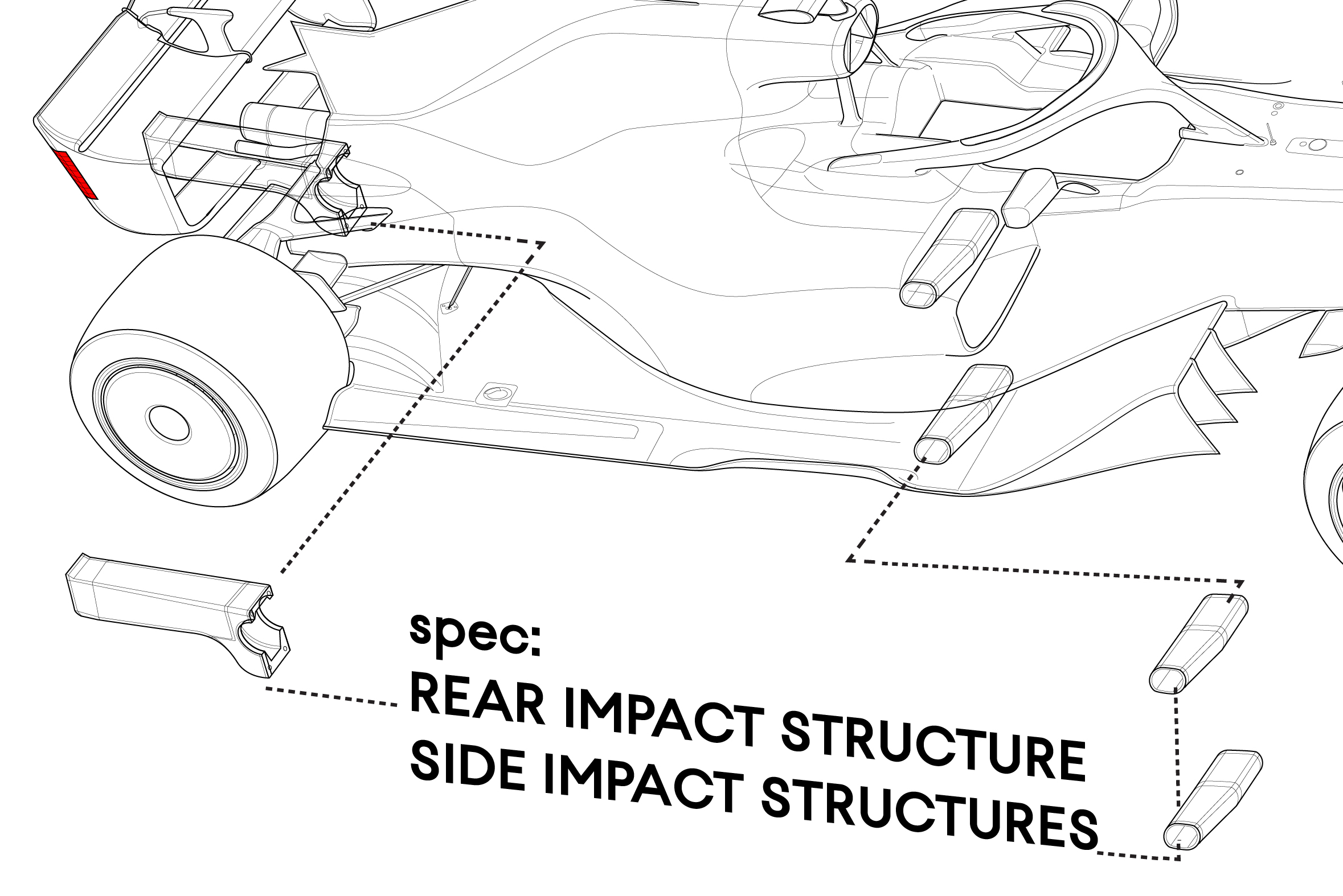
Away from the hard metal parts, some of the carbon fiber crash structures are to be included in the FIA tenders. Both the Side Impact Protection Spars (SIPS) and the Rear Impact Protection Structure (RIPS) are thought to be open for a spec supply. This, therefore, excludes the Front Impact Protection Structure, often referred to as the nose cone or more technically FIPS. This exclusion makes sense, as the shape of the nose is key to the car’s aero, so should remain free for the teams to develop and then prove with laboratory crash tests.
It isn’t widely known, but the SIPS are already a near spec design – back in 2014 a fixed design spar was introduced to all cars. This was initially a Manor designed part put forward to the FIA, that was then further developed by Red Bull on behalf of the FIA. The shape and carbon fiber lay-up of the part is in the appendix to the rules and some teams have even purchased theirs direct from Red Bull Technologies.
At the rear, the RIPS is currently free for the teams to shape within some dimensional and crash test rules. Effectively a rectangular section carbon fiber tube, the RIPS is bolted to the rear ‘gearbox’ casing and sits above the diffuser. So, any spec part will need to be allowed to be adapted to fit different cars and have add-on bodywork to shape the aero to suit the teams.
Making the SIPS a single supplier part along with a large section of the RIPS will save money on development and crash testing.
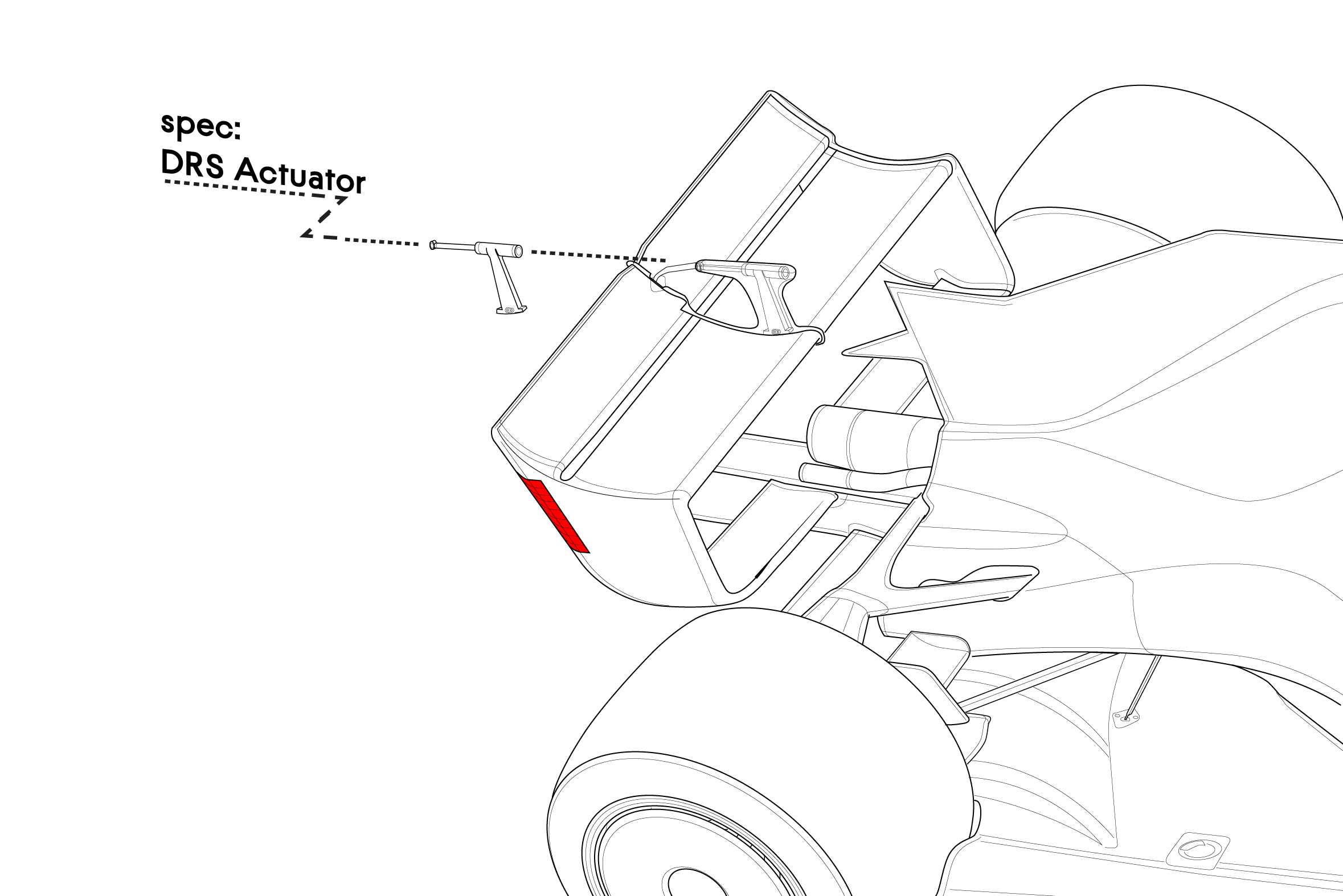
The last certain inclusion in the spec parts list is the DRS actuator -this is the hydraulic ram that opens the rear wing on the straights. Its inclusion suggests that DRS will remain a part of F1 at least for the short term, but it’s confusing why this innocuous part is included when so much else on the hydraulic system is left free. It would make more sense to specify the hydraulic pump, already the same basic part supplied to all teams by Parker Hannifin. Moreover, the various other hydraulic components such as the Moog valves, actuators, and steering rack could be included. While the talk of active suspension coming back to F1 in the future could also be using spec parts to limit extreme spending in developing bespoke devices.
Finally, there remains talk of the steering wheel being a spec part. Again, this seems like an unnecessary restriction. Just as with pedals and brakes, there’s team and driver preference into the equation. Already the Dash display and internal electronic circuit boards and connectors are spec parts. I’d rather leave the wheel design to be unique to each team/driver and have some differentiation between the cars from the onboard shots.

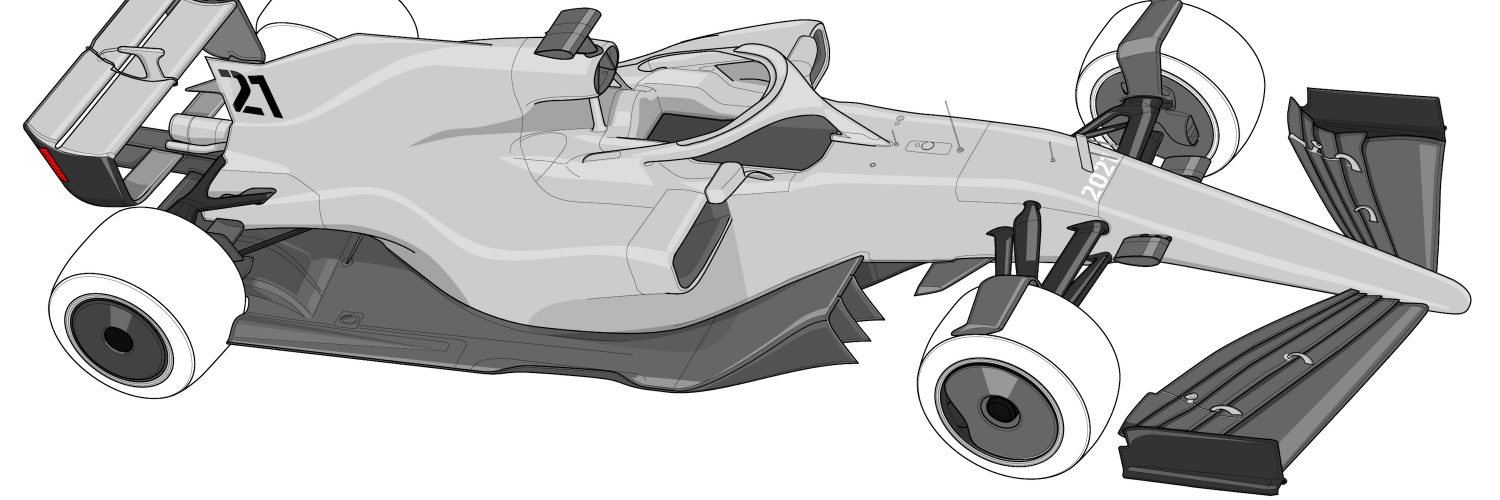


Hi Craig, i was wondering why you added diffuser strakes to the bargeboard area of the “ground effect underfloor”. Aren’t they used for the generation of vortices to capture the tyre squirt of the rear tyres and reduce the strength to increase the efficiency of the rear diffuser. Surely the angle of attack on the plane would create a large amount of lift near the centre of mass meaning that you cause a balance instability at the centre of the car which as i’m sure you know would mean it would be much more unstable. Thanks, Jack.
Great piece. Very informative
What about the rear wing endplate? In the illustration it seems there is no endplate over the wing, how does that affect the aero?
Why there are 5 elements of the front win, not 3?
First and most important change should be fuel.!! In future engines should only use normal pump-gasoline. Not toluen or alcohol or any other mixes. Just normal pump gasoline And every time organization bring it to race.
This lower the costs significantly. And after that, we have more cars in start line, because smaller teams have afford those engines.
Engines can be 1.5 liter turbos or 3 liter without, but normal 98 octane gasoline. And THEN, we have more excitement in F1.
Very disappointing, DRS remains? – This is not Formula 1, it should have been trashed long ago. Or, kept, provided it could be activated by the driver, everywhere.